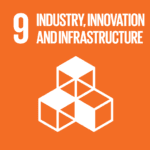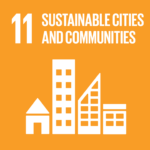Unlike genetically modified crops, this low-methane rice variety was developed using traditional crossbreeding techniques, making it a viable solution for widespread adoption in major rice-producing nations like China, India, Indonesia, and Vietnam.
Rice has long been a staple food for more than half of the world’s population, but its environmental cost has been largely overlooked. Rice cultivation is responsible for 12% of global methane emissions, a greenhouse gas 25 times more potent than carbon dioxide in trapping heat. Now, scientists have developed a new rice strain that reduces methane emissions by an astonishing 70%, offering a potential game-changer for global agriculture and climate action.
RELEVANT SUSTAINABLE GOALS




Unlike genetically modified crops, this low-methane rice variety was developed using traditional crossbreeding techniques, making it a viable solution for widespread adoption in major rice-producing nations like China, India, Indonesia, and Vietnam.
The Science Behind Low-Methane Rice
Researchers at the Swedish University of Agricultural Sciences studied how root exudates—substances secreted by plant roots—contribute to methane emissions in flooded rice paddies. The study compared two rice varieties:
- Nipponbare, a Japanese cultivar with average methane emissions.
- SUSIBA2, a genetically modified strain known for producing less methane.
The team discovered that SUSIBA2 produced lower amounts of fumarate, a root exudate that fuels methane-producing microbes in the soil. However, another surprising factor emerged—the plant also released high levels of ethanol, which appeared to suppress methane production even further.
Building on these findings, scientists crossbred a high-yielding rice variety with a strain known for low fumarate and high ethanol production. The result? A breakthrough rice strain that not only emits 70% less methane but also yields over 8 tonnes per hectare, double the global average of 4 tonnes.
One of the most compelling aspects of this research is that the new rice strain does not rely on genetic engineering.
“They don’t use hard-core gene engineering or transgenic approaches,” said Johannes le Coutre, a food scientist at the University of New South Wales in Australia. “They use traditional crossbreeding to create new rice lines that naturally lower methane synthesis.”
This means fewer regulatory hurdles and greater acceptance from governments and farmers, particularly in regions where genetically modified crops face restrictions.
Implications for Asia and Global Food Security
With Asia producing over 90% of the world’s rice, the adoption of low-methane rice could significantly reduce global greenhouse gas emissions while securing higher yields for farmers. The benefits of this new variety could be particularly transformative for India, China, Bangladesh, and Southeast Asia, where rice cultivation is both an economic backbone and a major source of methane pollution.
If scaled globally, this breakthrough could help countries meet their climate targets, improve soil health, and create more sustainable farming systems—all while feeding billions.
As the world grapples with climate change and food security challenges, innovations like low-methane ricedemonstrate how science can provide practical, high-impact solutions. With traditional breeding methods making this rice variant more accessible, the next step will be large-scale adoption and policy support to ensure farmers can transition smoothly.
You may also be interested in :
The Rise of Adan Krayan rice: A Culinary Gem From Kalimantan





